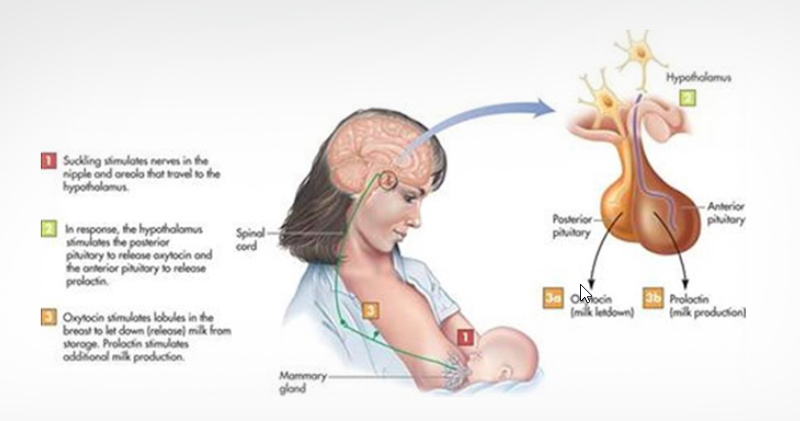That is the breast consists of gland tissue which actually produce milk and supporting tissue which is mainly fat.
[the_ad id=”13371″]
It is only after conception that the glandular tissue becomes active. The milk produced in the glands is carried in tubes and ducts to form lactiferous sinuses where it is collected. From there they lead to the tips of nipples via few 10-20 ducts. Nipples are a sensitive part with lots of nerve endings and Areola is the dark area around the nipple which secrete lubrication to keep the nipples soft.
The Brain behind the breast milk (Breast physiology)
The two main hormones or chemicals produced by the brain are PROLACTIN and OXYTOCIN
PROLACTIN is the hormone which makes the breast glands produce milk. Every time the baby suckles at the breast the nerves carry signals to the brain which increase prolactin secretion. Prolactin goes to the breast glands to make them secrete more milk.
This is the PROLACTIN REFLEX/MILK SECRETION REFLEX.
So more the baby suckles more is the milk production.
OXYTOCIN makes the tiny muscles around the breast glands work to eject the stored milk out. When the baby starts suckling the nerves in the nipple signal the brain to produce oxytocin which in turns help the breast to eject milk from the ducts and makes the milk flow out.
This is the OXYTOCIN REFLEX/MILK EJECTION REFLEX.
Baby’s thoughts, sight, hearing the cry or holding the baby ,all help to increase the oxytocin reflex, whereas negative thoughts /worry/stress/pain hinder the reflex thereby reducing milk flow.

